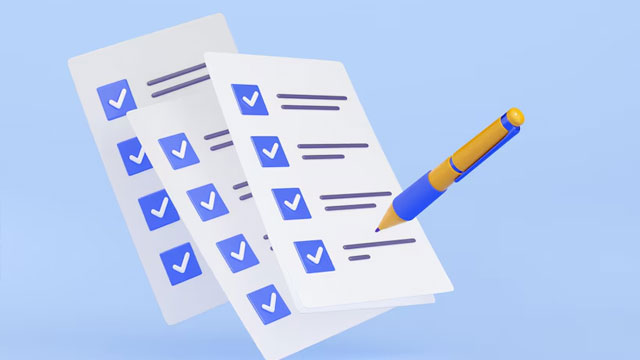As a newcomer to the Digital Marketing world, one often faces the problem of “Where to start my SEO in case of a new project?” It is definitely the On-page SEO but with so many technical SEO issues to take care of a new digital marketer often becomes puzzled. Let me help you in this case.
At the very beginning, I would like to give a long list of technical SEO terms that you need to keep in mind. Then I will explain each one of them with examples.
1. Technical SEO Checklist for Every New Website:-
- Website Analysis – Evaluates the overall structure, functionality, and SEO health of the website.
- GSC & GA4 Integration – Ensures Google Search Console & Google Analytics 4 are set up for tracking.
- Meta Data Analysis – Examines title tags, meta descriptions, and headers for SEO optimization.
- W3C Validation – Ensures website code follows web standards for better performance and compatibility.
- CSS Validation – Checks for errors in CSS that may affect design consistency and page loading.
- JavaScript Validation – Identifies JavaScript errors that could impact website functionality or indexing.
- Link Structure Analysis – Evaluates internal and external linking for SEO and user experience.
- AMP Analysis – Ensures Accelerated Mobile Pages (AMP) are correctly implemented for mobile performance.
- Website Speed Analysis – Measures page load times and identifies factors affecting speed.
- Website Performance Analysis – Assesses site responsiveness, resource usage, and overall efficiency.
- Mobile Responsiveness Analysis – Checks if the site is optimized for different screen sizes and devices.
- Website Image Analysis – Reviews image optimization, alt text, and compression for SEO and speed.
- SSL & HTTPS Implementation – Ensuring the site is secure with an SSL certificate.
- Canonical Tags Check – Prevents duplicate content issues and consolidates ranking signals.
- Robots.txt – Ensures search engines crawl and index your site properly.
- Structured Data (Schema Markup) Analysis – Helps search engines understand and display rich snippets in search results.
- Broken Links & Redirects Check – Identifies and fixes broken links (404 errors) and improper redirects.
- Core Web Vitals Audit – Checks key Google metrics: LCP (Largest Contentful Paint), FID (First Input Delay), CLS (Cumulative Layout Shift).
- Indexation & Crawlability Check – Ensures important pages are indexed, and unnecessary ones are blocked from crawling.
- Hreflang Tag Implementation (for Multilingual Sites) – Ensures correct language versions of pages are served.
- Log File Analysis – Helps understand how Googlebot crawls your website over time.
- Lazy Loading for Images & Videos – Improves page speed by loading media only when needed.
- XML & HTML sitemap – It is a file that lists all the important pages of your website to ensure that search engines like Google can crawl and index them. The main purpose of an XML sitemap is to help search engines discover and prioritize your pages more efficiently.
2. On Page Analysis & Optimization
i) User Experience (UX) Optimization
- UI/UX Analysis – Reviews user experience, ease of navigation, and visual design effectiveness.
- Mobile-Friendliness & Responsive Design – Ensures a seamless experience on all devices.
- Ease of Navigation & Site Structure – Helps users find content easily, reducing bounce rates.
- Page Load Speed & Performance – A fast-loading website improves user retention.
- Visual Hierarchy & Readability – Ensures content is easy to scan and consume.
- Call-to-Action (CTA) Placement – Guides users toward conversions effectively.
- Whitespace & Content Spacing – Enhances readability and improves engagement.
- Interactive Elements & Engagement – Includes animations, hover effects, and intuitive design.
- Accessibility (ADA Compliance) – Ensures usability for all users, including those with disabilities.
- Domain Authority, Page Authority, Rank Checks – Assesses website credibility and ranking potential.
- Anchor Text – The clickable text in a hyperlink. Proper use of anchor text is crucial for both user experience and SEO (Search Engine Optimization), as it informs users and search engines about the context and relevance of the linked page.
ii) Metadata Optimization
- Title Tag – Keep under 60 characters, include the primary keyword, and make it engaging.
- Meta Description – Keep it under 160 characters, include relevant keywords, and write compelling copy.
- Meta Keywords – Though irrelevant nowadays it was once a ranking factor for major search engines like Google.
- Meta Robots – Meta Robots directs search engine crawlers on how to index and follow links on the page.
- Meta Charset – It defines the character encoding for the webpage.
- Header Tags (H1, H2, H3, etc.) – Structure content properly using keywords in headings.
- Canonical tag optimization – Prevent duplicate content issues by telling search engines which version of a page is the “preferred” or “canonical” one.
- Geotag – This metadata helps search engines associate the content with a specific location, improving local SEO and visibility.
- Meta Viewport – It defines how the page should be displayed on mobile devices.
- Open Graph Tags – Optimize previews for Facebook and LinkedIn.
- X (Twitter) Cards – Optimize previews X (Twitter)
iii) Internal Linking & Navigation
- Relevant Internal Links – Link to related content to improve user flow.
- Anchor Text Optimization – Use descriptive and keyword-rich anchor text.
- Orphan Page Check – Ensure all pages have at least one internal link.
iv) URL Structure
- Short, Clean URLs – Avoid long, complex URLs with unnecessary characters.
- Keyword in URL – Include a relevant keyword without stuffing.
- Avoid Stop Words – Remove unnecessary words like “and,” “the,” “of,” etc.
v) Image & Media Optimization
- Alt Text for Images – Use descriptive alt tags with keywords for accessibility and SEO.
- Image Compression – Reduce file sizes without losing quality (use WebP, JPEG, or PNG).
- Lazy Loading Implementation – Improve page speed by delaying image load.
vi) External Links & Outbound SEO
- Outbound Links to Authority Sites – Link to high-quality, relevant external sources.
- Use of Nofollow for Untrusted Links – Prevent passing link equity to low-quality sites.
vii) Social Sharing & Open Graph Optimization
- Social Media Sharing Buttons – Make it easy for users to share content.
viii) Content Optimization
- High-Quality, Original Content – Avoid duplicate content and ensure uniqueness.
- Content-Length & Depth – Provide in-depth, informative content that satisfies search intent.
- Readability & Formatting – Use short paragraphs, bullet points, and simple language.
- Multimedia Usage – Include images, videos, infographics, and GIFs for engagement.
- Content Analysis – Evaluates content quality, keyword optimization, and readability.
ix) Keyword Research
Selecting the best match keywords for your website that will boost the website presence in the search engine and give the maximum return through internet marketing.
- Primary & Secondary Keywords – Strategically place in title, headings, and content.
- Long-Tail Keywords – Use natural, conversational phrases to capture specific search intent.
- Keyword Density – Maintain a balance; avoid keyword stuffing.
3. Competitor Analysis
Competitor Analysis identifies competitor strategies and benchmarks for improvement. It typically falls under SEO (Search Engine Optimization) and Digital Marketing Strategy, but it can also have cross-functional importance across various areas, depending on your focus. Here’s where it fits:
Competitor Analysis in SEO:
- On-Page SEO: Helps in identifying competitors’ strategies, including keyword usage, content types, and link structures.
- Off-Page SEO: Allows you to analyze competitors’ backlink profiles and domain authority.
- Content Strategy: Helps to identify the type and quality of content competitors are creating, which can guide your own content development efforts.
Competitor Analysis in Digital Marketing:
- Marketing Strategy: Helps you understand how competitors are positioning themselves in the market, what offers they are running, and which channels they are using (social media, email marketing, paid ads, etc.).
- Product/Service Benchmarking: Helps identify the strengths and weaknesses in competitors’ offerings, which can be used to differentiate your own product or service.
- Customer Insights: Through competitor analysis, you can gain insights into customer pain points, needs, and behavior that competitors are addressing.
4. Off Page Optimization (Link Building Strategy)
- Search Engine Submission: Helps ensure search engines know about your website, but it’s not as critical today since search engines like Google are good at discovering new content through links.
- High Reputed Directory Submission: Submitting your website to quality business directories helps create backlinks and can boost credibility, especially for local SEO.
- Content Marketing: Publishing relevant and valuable content that attracts links naturally from other sites.
- Unique Articles Syndication: Republishing articles on other sites can help generate backlinks, but the content should be unique to avoid duplicate content issues.
- Press Release Sharing: Useful for building backlinks and improving visibility, especially for announcements or brand-building efforts.
- Creation/Optimization and Blog Posts Submission: Creating and optimizing blog posts for backlinks, either through your own site or guest posting.
- Micro-Blogging: Posting on platforms like Twitter or Tumblr with backlinks to your site can be useful for building brand awareness and generating traffic.
- High DA Social Bookmarking: Bookmarking your website on social bookmarking sites with high domain authority (DA) can help build backlinks and improve visibility.
- PPT Creation, Submission, and Sharing: Creating PowerPoint presentations and sharing them on platforms like SlideShare can generate backlinks and traffic.
- Video Optimization & Sharing on YouTube, Vimeo, etc.: Optimizing videos on platforms like YouTube and Vimeo with backlinks to your site can significantly improve your SEO.
- Infographic Creation, Submission, and Sharing: Infographics are highly shareable and often lead to backlinks from other sites, provided they are informative and visually appealing.
- Classified Ad Posting: Useful for generating backlinks, especially for local or niche businesses.
- Business Listing: Listing your business on relevant business directories (Google My Business, Yelp, etc.) can help with local SEO and credibility.
- Profile Linking & Profile Creation: Creating profiles on various platforms (e.g., LinkedIn, social networks) with backlinks can boost SEO.
- Image Sharing & Optimization: Sharing images on image platforms (e.g., Pinterest, Instagram) with backlinks can help drive traffic and generate backlinks.
- Forum Posting & Answering Quora Posts: Engaging in discussions on forums or Q&A platforms (e.g., Quora) can help build backlinks and drive traffic, as long as it’s relevant and non-spammy.
- RSS Feed Submission: Submitting your RSS feed can help notify search engines and others when you publish new content, building backlinks over time.
- Explore Guest Postings: Writing guest posts for reputable websites in your niche can provide high-quality backlinks and visibility.
- Yahoo Answers & Blog Comments: Participating in Q&A platforms and commenting on blogs with relevant content and links can be beneficial, but should be done carefully to avoid spammy behavior.
- Regular Backlink Monitoring: Monitoring the health and quality of your backlinks is essential for maintaining a strong link profile.
- Disavow Spam Sites from Sending Backlinks: If you are receiving low-quality or spammy backlinks, it’s important to disavow them through Google Search Console.
- Social Media Signals: While not a direct ranking factor, social media activity can amplify content visibility, indirectly contributing to SEO. Consider including mentions, shares, or engagement on social platforms.
- Local Citations: For local SEO, ensuring your business is listed in relevant local citations (like Yelp, Yellow Pages, or local business directories) is a powerful off-page optimization strategy.
- Influencer Outreach: Collaborating with influencers or industry experts for backlinks or mentions can significantly enhance your link-building efforts.
- Content Repurposing: Repurposing content into different formats (e.g., converting blog posts into podcasts, videos, or infographics) can generate new backlinks as it attracts a broader audience.
- Review Sites: Encouraging positive reviews on trusted review platforms like Google Reviews, TrustPilot, or industry-specific platforms can improve both SEO and your brand’s credibility.
- Broken Link Building: Finding broken links on authoritative websites and offering your content as a replacement can be an effective and ethical strategy for gaining backlinks.
- Linkable Asset Creation: Creating valuable content such as case studies, research papers, or industry reports that naturally attract backlinks.
- Podcast Appearances: Appearing on podcasts and mentioning your website can help improve your backlink profile and also build your brand authority.
Now I will take up each and every term one by one and explain with examples. But before that, I would like t tell you one thing and that is this list is not the final one and it will grow eventually as technology progresses and more and more new terms come into existence in the Digital Marketing field.
Read more about Website Analysis: UI/UX Analysis in my next blog. Join a reputed academy to do digital marketing certificate courses online.








Leave a Reply